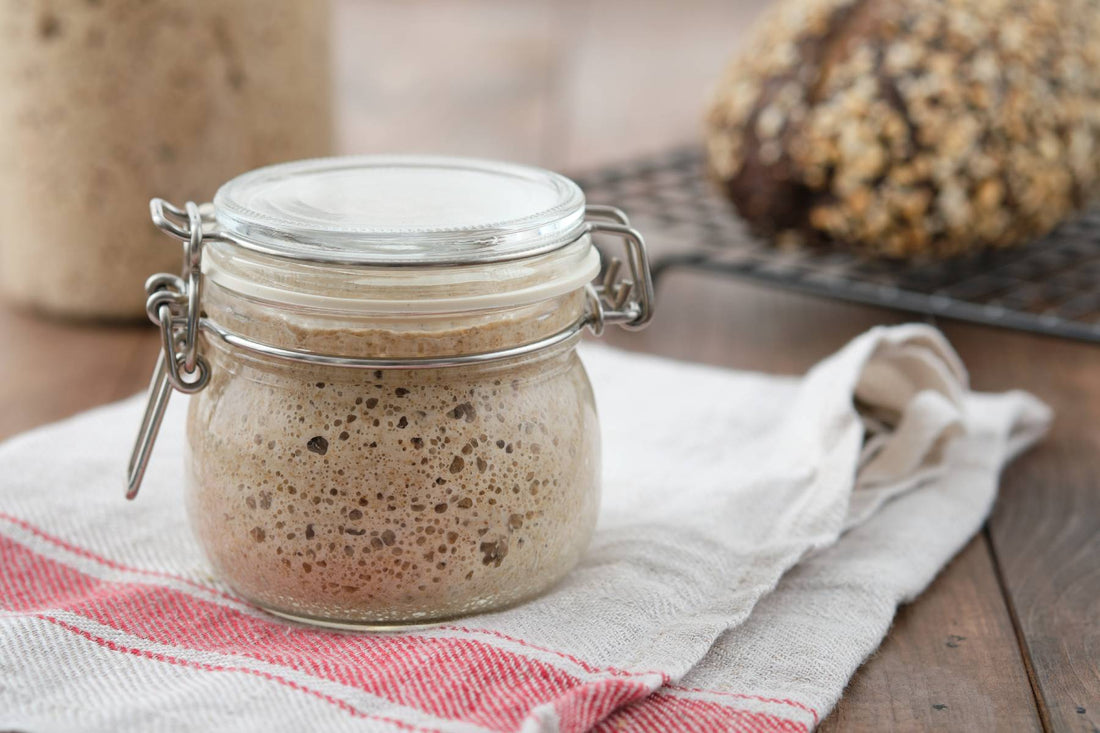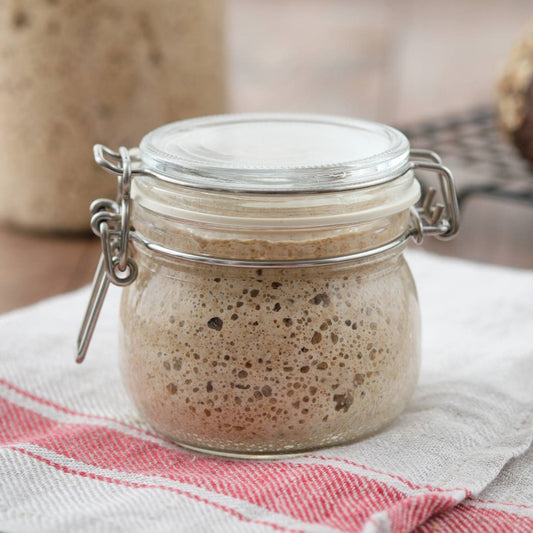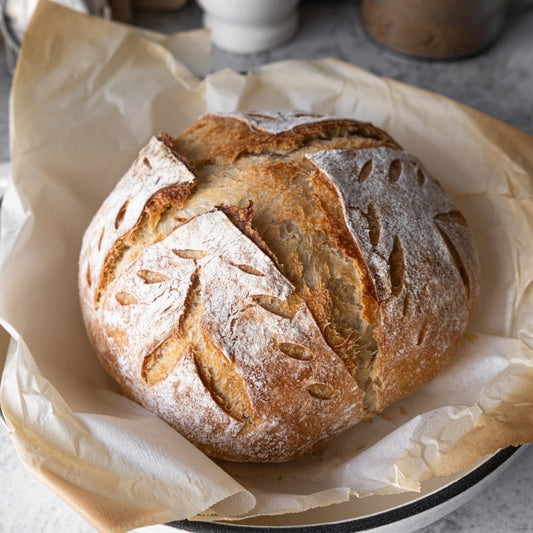
Sourdough Starter FAQ | Common Questions & Troubleshooting
Table of Contents
- Will My Live Sourdough Starter Survive Shipping?
- My Sourdough Starter Isn't Working
- There Are Small Bubbles But The Starter Won't Double In Size
- What's The Difference Between A Dried Sourdough Starter And A Live Sourdough Starter?
- What Kind Of Flour Should I Feed My Starter?
- What Kind Of Sourdough Starter Is Best?
- Can I Use Tap Water?
- How And When Should I Clean My Jar?
- Can I Use Any Sourdough Starter With Any Sourdough Recipes?
Introduction
Welcome! This page will take you through common questions that you may have about your sourdough starter and help you troubleshoot many common issues. You can buy our live organic sourdough starters here if you haven't already. Our sourdough starters are posted freshly fed and live.
Will My Live Sourdough Starter Survive Shipping?
Our live sourdough starters are very robust and can safely survive in transit for 2 weeks before they start to decline in health. The vast majority of our orders arrive within this delivery window. On the rare occasion of a late delivery, we'll always make it right with you. Please note that your starter will need a short recovery period, which you can read about below. As for our dried sourdough starters, they have a shelf life of 18 months.
My Sourdough Starter Isn't Working
If you bought a live sourdough starter, please note that it can take up to 2 days for the starter to adapt to its new environment and recover from transit, reaching full potency. So, don't be concerned if the first batch or two does not fully ferment. Simply keep feeding the starter as described in the instructions until it doubles in size.
There Are Small Bubbles But The Starter Won't Double In Size
Small bubbles are a great sign that your starter is alive and active, and all that's needed is a small tweak to get it to double in size:
Starter Is Too Thin
The consistency of your starter should be slightly less than that of peanut butter. If your starter is too thin, it will have trouble holding onto bubbles and won't double in size, despite it being very active and ready for baking. To resolve this, add slightly less water and slightly more flour to your next feeding. Then, add a bit more flour if needed until the starter reaches the correct consistency
Ambient Temperature Is Too Low
Another very common issue is where the ambient temperature is too low, which greatly slows down the rate of fermentation within the starter, preventing it from doubling in size within 12 hours. You should ideally keep the starter in the temperature range of 24°C - 28°C (75°F - 82°F).
What's The Difference Between A Dried Sourdough Starter And A Live Sourdough Starter?
A live sourdough starter is a sourdough starter that is hydrated and that can be used as soon as it doubles in size 12 hours after its last feeding. After being received by mail, a live starter will typically require 2 days worth of feedings until it's back in a normal ready-to-bake state. A dried sourdough starter, also called a dehydrated sourdough starter, is a live sourdough starter that has had all of its moisture fully removed. This essentially puts the starter to sleep, making it much more robust against high temperatures and extending its shelf life from 2 weeks to 18 months.
Generally, a dried starter will take 3 days – an extra day, to become active compared to our live starters. Because of these differences, a live starter will generally be the best choice for if you intend to bake as soon as possible; whereas a dried starter is a better choice for if you live in a rural or particularly hot location, if it's a gift, or if you don't intend to use your starter straight away.
What Kind Of Flour Should I Feed My Starter?
We recommend sticking to the type of flour that is already used to feed the starter. For our live organic rye sourdough starter, that would be organic rye flour which can be easily found online or bought at health food stores. For our live organic wholegrain wheat starter, we recommend wholegrain flour, which can easily be found at most supermarkets or online. As an alternative, both starters can be fed with bakers flour instead which converts it into a bakers flour starter. The type of flour that you feed a starter with determines what type of starter it is. Read the point below to learn about the pros and cons of each starter.
What Kind Of Sourdough Starter Is Best?
There are pros and cons to each of our starters:
Rye Starter
- Produces a very robust starter with a wide variety of microbes – forgiving if you forget to feed it
- Low in gluten, making it easy to stir
-
Rye flour is hard to source - needs to be bought online or at health food stores
Wholegrain Wheat Starter
- Also produces a robust starter with a wide variety of microbes – but slightly less forgiving
- High in gluten, making it hard to stir
- Whole wheat/wholemeal flour can easily be found at supermarkets
San Franciscan/Baker's Flour Starter
- Produces a still great starter, but has the least diversity of microbes, and is slightly less forgiving than a wholegrain wheat starter
- High in gluten, making it hard to stir
- Baker's flour can easily be found at supermarkets
Can I Use Tap Water?
No, we do not recommend using tap water as the chlorine can harm the starter. But don't worry, removing chlorine is an easy process. As chlorine is a volatile molecule, you can use one of these methods to evaporate most or all of it out:
- Let water sit in an open, empty vessel for 24 hours
- Use filtered water
- Boil tap water and let it cool.
How And When Should I Clean My Jar?
How often you clean your jar is a matter of personal choice. When you feed your starter, you could always clean any starter stuck to the walls of the jar by scraping it down into the main mass of the starter, and then finishing off with a paper towel to clean off any small residual bits of starter.
This should be enough to keep the walls of your jar clean, but you can switch out the jar once a week or once a month to a clean one, if desired. However, be sure to rinse out the jar with water to remove any potential residual detergent that could harm your starter.
Can I Use Any Sourdough Starter With Any Sourdough Recipes?
Yes, you certainly can. Your starter should work with any sourdough recipe, using any type of flour. For two favourites, check out the recipe section of our sourdough starter instructions and recipes.



